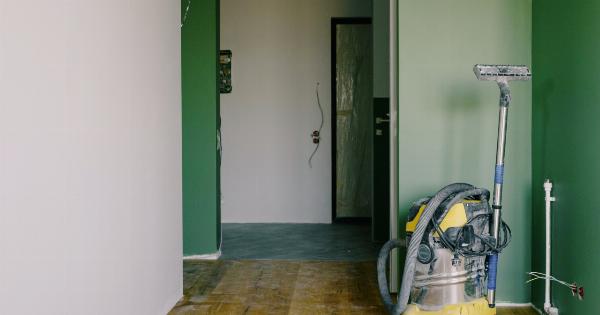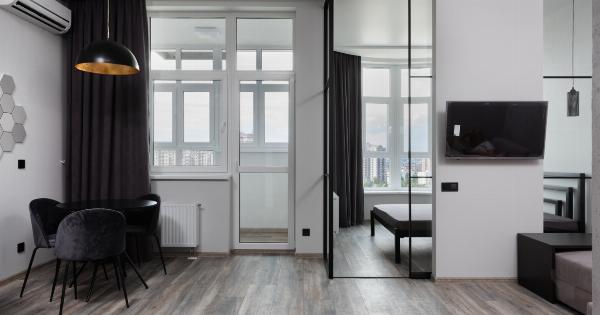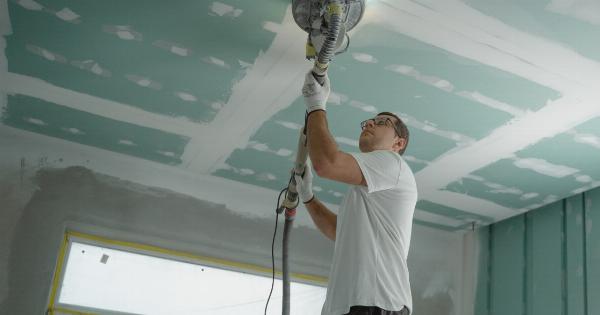Asthma is a chronic respiratory condition characterized by inflammation and narrowing of airways, leading to wheezing, coughing, chest tightness, and difficulty breathing.
It is a common disease, affecting about 339 million people worldwide, with the highest prevalence observed in children and the elderly. Environmental factors such as pollution, allergens, and toxins are known to trigger or worsen asthma symptoms. However, recent studies suggest that even a “clean” home may harbor hidden hazards that could harm your child’s asthma.
This article will explore the correlation between a clean home and asthma and provide tips on how to create a healthy living environment for your family.
What is a “clean” home?
The concept of a clean home usually refers to a living space that is free from visible dirt, dust, and clutter. Many people associate cleanliness with good hygiene, orderliness, and wellbeing.
However, the definition of a clean home may vary depending on individual preferences, cultural norms, and cleaning standards. For example, some people may use strong chemical cleaners and air fresheners to disinfect surfaces, mask odors, and create a pleasant scent.
Others may prefer natural or eco-friendly cleaning methods that use fewer chemicals and rely on physical scrubbing and washing. However, regardless of how you define a clean home, it is not always synonymous with a healthy home, especially for asthma patients.
The dangers of a “too clean” home
According to the hygiene hypothesis, the lack of exposure to germs and other microorganisms during early childhood may compromise the development of the immune system, leading to an increased risk of allergies, asthma, and other auto-immune disorders.
Therefore, some experts argue that exposure to a certain level of environmental dirt and bacteria may be beneficial for the immune system and prevent asthma. Besides, excessive cleaning and disinfection may inadvertently introduce harmful chemicals and irritants to the indoor air, which could trigger asthma symptoms.
For example, using chlorine bleach to clean surfaces may release chlorine gas, a potent respiratory irritant that can cause wheezing, coughing, and shortness of breath. Similarly, using scented cleaners or air fresheners may contain volatile organic compounds (VOCs) that can irritate the airways and trigger asthma attacks.
Allergens in a clean home
One of the main triggers of asthma symptoms is exposure to allergens such as dust mites, pollen, pet dander, and mold spores.
Although a clean home may reduce the amount of visible dust and dirt, it may also harbor hidden allergens that could exacerbate asthma symptoms. For example, dust mites, microscopic organisms that feed on dead skin cells, thrive in warm and humid environments such as bedding, carpets, and curtains.
Regular vacuuming and washing can remove some of the dust mites and their waste products, but they may still accumulate even in the cleanest home. Similarly, mold spores, which grow in damp areas like bathrooms and basements, can easily spread through the air, especially during cleaning or renovation tasks, and trigger allergic reactions and asthma.
Indoor air quality and asthma
Indoor air quality (IAQ) is a term that refers to the condition of the air inside a building, and it can have a significant impact on human health, especially for asthma patients.
Poor IAQ can result from various factors such as inadequate ventilation, indoor pollution from cooking, smoking, or cleaning, or the presence of allergens and irritants in the air. High levels of humidity, especially above 50%, can also promote the growth of mold, dust mites, and other allergens, as well as increase the concentration of volatile organic compounds (VOCs) and other pollutants in the air.
Exposure to these pollutants and allergens can trigger asthma symptoms, worsen existing asthma, or even lead to the development of asthma in healthy individuals.
How to create a healthy home for your family
Creating a healthy home for your family, especially for asthma patients, involves a holistic approach that addresses various aspects of indoor environment, including cleaning, ventilation, and lifestyle habits.
Here are some tips to help you create a healthy and asthma-friendly home:.
- Use natural or eco-friendly cleaners and avoid strong chemical cleaners or air fresheners
- Ventilate your home regularly by opening windows, using exhaust fans, and avoiding indoor smoking or burning
- Control indoor humidity by using a dehumidifier or air conditioner, fixing leaky pipes or roofs, and avoiding wetting surfaces
- Remove or limit the use of carpets, especially in bedrooms, and use washable mats and rugs instead
- Wash bedding, curtains, and other fabrics regularly in hot water to kill dust mites and allergens
- Use a high-efficiency air filter in your HVAC system and change it regularly
- Avoid using wood-burning stoves or fireplaces in your home
- Reduce clutter and keep your home organized to minimize dust accumulation and allergen exposure
Conclusion
A clean and hygienic home is essential for the wellbeing of your family, but it should not come at the expense of your child’s asthma.
While a certain level of cleaning and disinfection is necessary, excessive cleaning and exposure to chemicals, allergens, and pollutants can harm your child’s respiratory health and worsen asthma symptoms. By adopting a holistic approach to indoor environment and following the tips listed above, you can create a healthy and asthma-friendly home for your family.





























